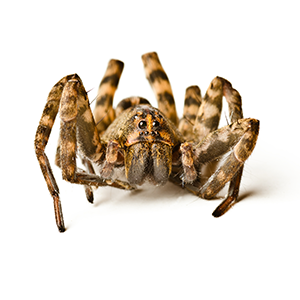Key Concepts: Forest ecosystems include processes such as photosynthesis, energy flow and the cycling of nutrients, water, carbon, and other matter. [PLT’s Forest Literacy Framework, Concept 1.C.3]
 Objectives: Provide opportunities and materials for learners to:
Objectives: Provide opportunities and materials for learners to:
- See how one organism is connected to other organisms in an ecosystem.
- Use a model to understand the interdependence of organisms in an ecosystem
Session Time: 50 minutes
Setting: Indoors or Outdoors
 One way that forest plants and animals are connected is through energy from food. All life depends on photosynthesis, the ability of plants and a few other organisms to capture the sun’s energy and use it to synthesize simple sugars from carbon dioxide and water. Through photosynthesis, organisms make the sun’s energy available to animals. Plant eaters, or herbivores, eat plants directly; in turn, animal eaters, or carnivores, eat herbivores or other carnivores.
One way that forest plants and animals are connected is through energy from food. All life depends on photosynthesis, the ability of plants and a few other organisms to capture the sun’s energy and use it to synthesize simple sugars from carbon dioxide and water. Through photosynthesis, organisms make the sun’s energy available to animals. Plant eaters, or herbivores, eat plants directly; in turn, animal eaters, or carnivores, eat herbivores or other carnivores.
A food chain is a simplified way of showing energy relationships between plants and animals in an ecosystem. For example, one food chain might be sun > plant > mouse > owl: a plant is eaten by a mouse, which in turn is eaten by an owl. Food chains include both producers (organisms that make their own food) and consumers (organisms that feed on other organisms).
It is rare for an animal to eat only one type of food. A food web describes the complex interconnection of all the food chains and cycles in an ecosystem and gives a clearer picture of how plants and animals in an ecosystem are related to one another.
Materials:
Paper, string, or safety pins for nametags; 200 feet of string or yarn.
Get Ready:
Make nametags of the sun and a variety of different forest animals and plants, with a name and photo for each. Aim to have at least one nametag per learner. You may also choose to use species present in your local forests.
 Introduce
Introduce
Introduce or review the food web concept (see Background). Ask learners to work in pairs or teams to brainstorm all the components they think would be necessary for a healthy food web in a forest. Invite them to share their ideas with the rest of the group.
Experience
- Have learners sit or stand in a circle and explain that the group will model a forest food web. Distribute a nametag to each learner.
- The learner with the “sun” nametag should start by holding onto the loose end of the ball of yarn and passing the ball to another organism that uses energy from the sun to make food (a producer).
- Ask the producer where its energy might go next, identifying an organism from the circle that might eat it or depend on it. The producer should pass the ball of yarn to the third learner. Whenever the ball is passed, each learner should continue to hold onto part of the yarn.
- Ask the third learner to identify the next interaction, passing the ball of yarn to that organism. Continue this process until all the organisms are linked.
- Ask one learner to tug on the yarn. If someone feels a slight tug, ask them to tug gently back, illustrating the connectiveness of elements in the ecosystem. Prompt a few tugs, as necessary.
- Select one organism and have that learner drop their yarn. Who felt the web slacken? How does that affect the ecosystem? Have several other organisms drop their yarn as well. Ask: What happened to the web? What would happen in an ecosystem if an entire species was removed?
Connect
Invite learners on a guided walk to find evidence for food webs at the site. For example, they might look for chewed leaves, animal droppings, or other signs of the transfer of energy.
Ask the following questions to conclude the experience: How is each part in the forest ecosystem connected to the other parts? What can we say about the relationship between the number of parts in an ecosystem and its stability? (In general, the more diverse an ecosystem is, the more stable it is.) How might humans be connected to this forest ecosystem?
TAKE ACTION!
Suggest that learners think about the habitat in their own backyard, a nearby park, or school campus. What are two actions they can take to support the food web in that area? For example, they might add bird feeders or plant native plants. They should be sure to check with the park or school to ask permission before taking action.


 Objectives: Provide opportunities and materials for learners to:
Objectives: Provide opportunities and materials for learners to: One way that forest plants and animals are connected is through energy from food. All life depends on photosynthesis, the ability of plants and a few other organisms to capture the sun’s energy and use it to synthesize simple sugars from carbon dioxide and water. Through photosynthesis, organisms make the sun’s energy available to animals. Plant eaters, or herbivores, eat plants directly; in turn, animal eaters, or carnivores, eat herbivores or other carnivores.
One way that forest plants and animals are connected is through energy from food. All life depends on photosynthesis, the ability of plants and a few other organisms to capture the sun’s energy and use it to synthesize simple sugars from carbon dioxide and water. Through photosynthesis, organisms make the sun’s energy available to animals. Plant eaters, or herbivores, eat plants directly; in turn, animal eaters, or carnivores, eat herbivores or other carnivores. Introduce
Introduce